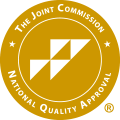Rolling Hills Hospital helps individuals struggling with self harm build a strong foundation for long-term recovery. Serving Ada, near Oklahoma City, Rolling Hills Hospital is the premier provider of mental health & addiction treatment for adolescents, adults & seniors.
Understanding Self-Harm
Learn about self-harm
Self-harm, also known as self-injury or self-mutilation, occurs when an individual inflicts physical pain and injury onto his or her person as a result of being unable to cope with distressing emotions, feelings, or situations. Often interpreted by others as attempts at suicide, self-harm is actually a damaging form of unhealthy coping that often indicates the presence of a mental health disorder. Those that engage in this type of behavior may cut, burn, scratch, scrape, bite, pinch, or hit themselves when their anxiety levels become unmanageable. Additionally, some people who intentionally hurt themselves will pull out their own hair, drink harmful chemicals, or purposely break their own bones.
Ignoring self-harming behaviors can ultimately lead to lasting or permanent effects, of which can be life-threatening. Seeking care to cease these behaviors can help those who self-harm understand their emotional pain and receive treatment for any existing mental health disorder. Lastly, effective and appropriate treatment can provide those who self-harm with the necessary tools and skills for healthy coping that can serve them well for a lifetime.
Statistics
Self-harm statistics
Research has suggested that one in seven males and one in five females engage in self-harming behaviors. Beyond that statistic, it is difficult for experts to determine the true prevalence of self-injury as those who partake in this form of unhealthy coping frequently conceal this type of behavior.
Causes and Risk Factors
Causes and risk factors for self-harm
Experts in the field of mental health agree that the following causes and risk factors can ultimately lead to the onset of self-harming behaviors:
Genetic: Generally speaking, the presence of self-harm suggests that a person is grappling with a form of mental illness. Mental illnesses, such as depression and anxiety, are known to have a genetic component to them as these disorders can run in families. Therefore, if an individual has a genetic predisposition to a form of mental illness, especially illnesses in which poor impulse control is a factor, there is a higher likelihood for an individual to self-harm.
Physical: Because self-injury infers that a person is struggling with a mental health condition, it can be concluded that individuals who self-mutilate have imbalanced neurotransmitters in their brains, as that is often a physical change that occurs when someone is battling a mental illness. Especially when these types of imbalances affect a person’s ability to control impulses or regulate mood, there is an increased possibility that an individual will self-injure.
Environmental: Mental health professionals agree that there are certain environmental influences that can lead a person to resort to self-harming behaviors. Especially when a person lacks the necessary skills for healthy coping, exposure to trauma, abuse, and neglect can cause an individual to hurt him or herself as a way of dealing with unpleasant emotions and feelings. Additionally, chronic stress at home, school, or work can trigger self-harm when a person lacks an adequate support system.
Risk Factors:
- Possessing a preexisting mental illness or illnesses
- Family history of mental illness or illnesses
- Lacking control over impulses
- Lacking effective coping skills
- Experiencing the sudden loss of a loved one
- Having an inadequate support system
- Experiencing trauma, abuse, and/or neglect
- Being confused about one’s sexuality
Signs and Symptoms
Signs and symptoms of self-harm
Depending on the length of time a person has been self-harming, as well as the means utilized to cause physical pain and injury, the signs that suggest a person is engaging in self-harming activities can vary. Additionally, where a person injures him or herself can affect the obviousness of signs that infer that he or she is partaking in this kind of behavior. Because individuals who self-mutilate often do so in private, it may not always be clear to loved ones that a person is self-harming. If you suspect a friend or loved one is self-injuring, it is important to report any and all of the following signs and symptoms to a mental health professional so that proper care can be received:
Behavioral symptoms:
- Decreased participation in things that were once enjoyed or considered pleasurable
- Social withdrawal or avoidance of certain social situations
- Wearing clothing that is not appropriate for weather conditions so as to conceal injuries
- Frequently making excuses for injuries and explaining them away as accidents
- Picking scabs
- Intentionally inflicting pain onto oneself
- Acting out when anxiety levels are high
Physical symptoms:
- Cuts
- Bruises
- Scrapes
- Burns
- Unexplainable broken bones
- Scratches
- Patches of missing hair
Cognitive symptoms:
- Poor focus
- Lack of concentration
- Inability to control impulses
- Feeling detached from surroundings
- Ongoing thoughts about self-injuring
Psychosocial symptoms:
- Guilty feelings
- Loneliness
- Feelings of worthlessness
- Feelings of helplessness
- Increased anxiety when not able to self-harm
- Feelings of hopelessness
- Feeling defeated or feeling as though it is not possible to achieve any form of success
Effects
Effects of self-harm
Several areas of a person’s life can be adversely affected when an individual self-harms. The following effects are known to occur when a person engages in self-mutilating behaviors:
- Social withdrawal or isolation
- Increased conflict within interpersonal relationships
- Greater likelihood for the development of a substance abuse problem
- Declined academic or occupational functioning
Additionally, there are a number of long-term health risks that can result if a person continues to self-injure without intervention. The listed detriments to a person’s health are possible when an individual self-harms:
- Anemia
- Nerve damage
- Hemorrhaging
- Scarring or permanent damage to tissues
- Improperly healed bones
- Infection
- Damage to vital organs
- Organ failure
- Accidental death
Co-Occurring Disorders
Self-harm and co-occurring disorders
When an individual engages in self-harming behaviors, he or she is most likely suffering from a form of mental illness. The following mental health conditions are frequently diagnosed when a person intentionally injures him or herself:
- Depressive disorders
- Bipolar disorder
- Generalized anxiety disorder
- Obsessive-compulsive disorder
- Panic disorder
- Post-traumatic stress disorder
- Substance use disorder
- Borderline personality disorder
- Eating disorders
- Schizophrenia






